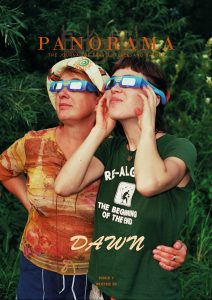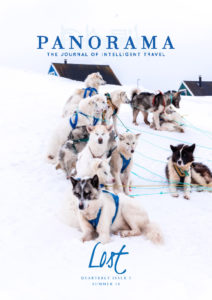‘Looks like it’s broken,’ he said pointing to the two holes in the ground.
We were having dinner with Benito Treviño and his wife Toni at our house and he was showing me a video on his phone. He had visited his neighbour’s ranch in Starr County near the Mexican border in South Texas. I know the area well as I live in the next county over. In the video, Benito was commenting on a series of bowls which had been carved into the limestone caprock under his feet.
These bowls are ancient, archaeological and totally my jam. I love American food history. Living on the Texas-Mexico border in the United States, we live at the crossfade point between English and Spanish. My house is closer to Mexico City than Dallas. Our regional food has a depth of culinary otherness, a distinct food dialect that is neither Mexican nor of the United States, similar to the distinct culinary otherness of New Orleans.
But South Texas ports never enjoyed brisk trade with Europe and New York like New Orleans. The historical bedrock of Texas food is spartan and indigenous with dependence on dry ingredients such as chile, corn and beans that could travel with a nomadic hunter-gatherer. After colonization, the indigenous nomads were no more. The land was parcelled into Spanish land grants and haciendas. Only with the discovery of oil and gas in the 1960s did our local economy blossom into something more than just farming and ranching.
I was immediately jealous that Benito had the good fortune to clap eyes on these tribally crafted mortar bowls, which for me are equivalent to a Tex-Mex Stonehenge. However, we don’t call them mortar bowls. Locally, we call them molcajetes.
The word molcajete is derived from Nahuatl, the ancient Aztec language of Mexico. A contraction of the two Nahuatl words – molli meaning ‘sauce’ and caxitl meaning ‘dish’ – the word molcajete doesn’t exactly mean ‘mortar’.
That we still use the word molcajete… that our local South Texas vernacular matches that of the ancient Aztecs, what does our modern use of an ancient Aztec word mean? More importantly, what does this mean for U.S. food history? Massasoit, Samoset and Tisquantum shared corn with the first pilgrims in the Plymouth colony in 1622, but corn is a native plant of present-day Mexico, the land of the ancient Aztecs. How did corn make the journey of 2,794.6 miles (4,479 km) from Mexico to Massachusetts?
By the way, calling them mortars or mortar bowls seems inaccurate since the English word ‘mortar’ comes from the old French ‘mortier’, derived from the Sanskrit mrnati. These older Eurasian words can mean crush, bruise or pound. The Aztecs had no contact with Indo-Aryans, much less the medieval French. A Eurasian word used to describe a Native American artefact seems out of context.
There is precious little remaining evidence of the Coahuiltecan tribes that existed along the Rio Grande and I can only think of three other words we commonly use that are indigenous: totache for the crested caracara, a type of regional falcon; tlacuache for an opossum; and pinacate for a stinkbug. So we don’t really know what the people who made these stone bowls would have called them. However, as their closest neighbours who left an enduring language, the Aztecs would have referred to them as molcajetes.
After our dinner, Benito spent time meditating on two of the molcajetes in the caprock, the ones that he said were broken. The bowls are carved unusually close together. One was large and deep, the other was narrow and shallow. The thin partition of rock between the two bowls seemed to have broken at some point during their multi-millennial history of usage and existence. Hunter gatherer tribes who roamed northwards across Tamaulipas through the cloud forest of the Huasteca and into the superior hunting lands of present-day South Texas along the Rio Grande must have used this spot on their nomadic sojourns. Generations of tribal members would have used this collection of molcajetes carved into the caprock as a food processing station.
Benito is a Texas native plant expert and has spent his life studying the medicinal and nutritional qualities of local flora. His childhood was spent foraging on his family’s small ranch on the banks of the Rio Grande with his mother and grandparents. The ranch where Benito grew up was within 7 miles (12km) of the molcajete site. During our dinner he said he thought his family’s expert foraging skills were honed by their incredible poverty. However, six years ago a mail order DNA test revealed he is 36% Native American. Benito said he now realizes his family foraging in the South Texas thornforest was a practice of ancient American foodways.
His gut told him that the break in the rock partition between the shallow and the deep molcajetes in the caprock was intentional.
*****
Molcajete-style grinding bowls can be either a single, portable bowl, or a carving – or series of carvings – in a larger immoveable boulder. Boulder molcajetes are indicative of early human societies. Molcajete collections similar to the ones in Starr County can be found in archaeological sites across the entire stretch of the American continent and are too numerous to list.
However, single bowl molcajetes are still used today. The traditional one that I use daily in my modern home kitchen for making salsa and grinding spices is a single bowl handcarved from volcanic basalt rock. Similar molcajetes are available for purchase on Amazon and eBay.
I have heard dozens of dinner party stories of farmers or ranchers digging up single bowl molcajetes on their property. They can weigh between 10-20 lb. (4-9 kg) depending on their size and the type of stone used. Some historians say nomadic tribes would carry a molcajete with them as they travelled, and that those found in fields were abandoned or lost on the journey. My dad has one that is missing a large chunk of its rim which broke off when a tractor plough disk hit it. It weighs 40 lb. (18 kg) – definitely not an item easily transported on a nomadic journey. I think the plough that broke the molcajete rim simply dug up a former tribal home site.
*****
If you ran an online search for the food history of the United States, you would never stumble across a reference to a molcajete. However, an online search of Mexican food history would almost exclusively reference it. Peru has the batán, and Chile and Guatemala have the piedra. Additionally, metates are flat grinding surfaces found wherever corn culture existed across the Americas.
Most U.S. home cooks and chefs look on molcajetes and metates as Latin American kitchen curiosities, but their importance in Latin America and the United States southwestern region – including Texas, Arizona and New Mexico – cannot be overstated.
I lecture on food history. More often than not I am referencing the importance of the Fertile Crescent, an area in Mesopotamia first defined by Egyptologist James Henry Breasted. The Fertile Crescent is a region that arcs between the Tigris and Euphrates Rivers between Egypt and present-day Iran. Nomadic tribes settled there because of the abundance of water and food, giving rise to the primordial predecessors of domesticated wheat, grapes, olives, dates, flax, barley as well as pigs and sheep.
Lately I have become fascinated with the similarities between the Great Continental Divide of the American continent and the Fertile Crescent. J. H. Breasted described the latter as ‘a kind of cultivable fringe of the desert, a fertile crescent having the mountains on one side and the desert on the other.’
Although not shaped like a crescent, the Great Continental Divide runs in a vertical north-south crest that bisects the American continent, extending from the Bering Strait in Alaska down to the Strait of Magellan in Chile. It, too, has mountains with desert fringes. Water drainage from the crest of the divide attracted wildlife, which attracted hunter-gatherer nomadic tribes. Corn, beans, squashes, gourds, pumpkins, tomatoes, potatoes, chiles, and tobacco are native plants of the Americas and were distributed by tribes tracking wildlife along the divide. Because the Great Continental Divide is a reliable corridor where wildlife and game thrive, it should be remembered as the food superhighway of the Americas.
Benito and I live near the Rio Grande which runs parallel with the Great Continental Divide. As the crow flies, the Ocampo Caves are about two hours south in the Mexican state of Tamaulipas. My husband grew up in Tamaulipas. In the 1950s and 60s archaeologist Richard S. MacNeish investigated the Ocampo Caves and found some of the oldest evidence of corn cultivation in the Americas – 2455 B.C.E. There were also gourds cultivated at the Ocampo Caves dated to 4360 B.C.E., predating Egyptian boy King Tutankhamun in the Fertile Crescent by about 3,000 years.
Older evidence of corn planting was found near the Mexican state of Oaxaca in the Guila Naquitz Caves, dating to around 9,000 years ago. Perhaps this older dating indicates an origin point for corn. On maps, the Great Continental Divide passes through Oaxaca.
‘I really think these two bowls were meant to be some sort of colander,’ said Benito. ‘You could put tunas (fruit from the Opuntia ficus-indica, commonly known as prickly pear cactus) in the narrow cylindrical bowl, smash the fruit with a stick or stone pestle, and the pulp would spill over into the lower, deeper bowl.’
Next to the double bowl colander arrangement are fanned swirls of shallow indentations that Benito identified as sharpening surfaces for arrowheads and spear points. There are smaller bowls for grinding fine powders and deeper bowls for corn or seeds that required heavy pounding. The assortment of receptacles, surfaces and arrangements showed that the tribes had a variety of foods and food-hunting tools that could be refined on this stone-processing station.
MacNeish along with other archaeologists spent their careers searching for the origin of farming around the world. As a food writer and an avid student of American food history, I sometimes can’t believe my luck that I live only a stone’s throw from one of the most significant digs in Ocampo, Tamaulipas.
Also, if I hopped in my pickup truck and drove northwest along the Rio Grande, by the end of the day I would arrive at Pendejo Cave outside of El Paso, an even more startling MacNeish dig. Even though the name of the site always makes me giggle (look it up) MacNeish’s findings at Pendejo Cave were radiocarbon-dated to 31,000 B.P. (Before Present), predating Clovis, one of North America’s earliest hunting-gathering societies, by almost 13,000 years.
From my perspective, the river border of Texas is the starting line for U.S. food culture. Of course, my opinion is partially based in local hometown pride. But when you zoom out and examine a map of the Great Continental Divide and the Rio Grande, there is no shorter route that corn, squash, chiles, potatoes or tomatoes could have taken to Plymouth Rock.
California, Arizona and New Mexico also share a border with Mexico and could possibly claim to be the entry point of corn into the United States. However, only Texas has a life-sustaining natural resource as its border: the waters of the Rio Grande.
As with the Great Continental Divide, all forms of life gravitate towards reliable sources of water.
Corn crossing into present day U.S. territory over the Rio Grande is further supported by the early evidence of corn farming in the Ocampo Caves in nearby Tamaulipas, only 125 miles from the molcajetes in Starr County. Before the imposition of international boundaries, border walls and cartel turf wars, this 125-mile stretch between the Ocampo Caves and Starr County would have taken only two-three days to travel by foot.
There are three other Continental Divides in U.S. territory that could account for the distribution of corn and other native American crops. The Laurentian Divide stretches east away from its junction with the Great Continental Divide in Montana, ending in Nova Scotia. The St. Lawrence River Divide drops down from the Lawrentian Divide in Northern Minnesota. The Appalachian Divide meanders south from upstate New York down to southern Florida – not an east/west path at all, which functions as a vertical distribution artery along the East Coast of the United States. However, these lesser divides traverse northernmost points along the U.S./Canadian border.
Intention and economy are hallmarks of indigenous legacy. Tribal nomads could have used the Laurentian Divide or the St. Lawrence River Divide as a hunting route, trading native plant seeds along the way. But the more direct route for corn traveling to Plymouth Rock, especially if the corn was harvested near the Ocampo Caves, would have been crossing the Rio Grande before heading east.
*****
Few people visit South Texas, so the geographical infrastructure that supported early tribes is unfamiliar to the rest of the United States. As long-time Rio Grande Valley citizens, Benito and I spend our days reconciling what we see in our rural environment with what the rest of the United States experiences. Where do we fit in to U.S. history and culture? Evidence such as the molcajetes and the nearby Ocampo Caves tells us that the Rio Grande river delta was vibrant with tribes whose existence predated cultures of early Egypt, Babylonia, Mesopotamia and the Fertile Crescent.
Curiously, both the Fertile Crescent and our Southwest sector of the Rio Grande dominate international news these days, albeit not for contributions to humanity’s food history. Our Texas border is experiencing an unprecedented immigration crisis. I see strangers, neighbours, and friends engaged in this crisis daily. Long-time tensions between Israel and Palestine have erupted into a full-scale conflict which dominates national and international news feeds. Extending the comparison between the Fertile Crescent and the Great Continental divide, these crises are similar yet distinct. The Israeli/Palestinian conflict affects fifteen million citizens, with bombs involved. The Texas border immigration crisis has seen forty-three million apprehensions of undocumented migrants between the years of 1960-2020. These crises have been slow to build, but both reached ignition points within the last few years.
I took my dad to see the Starr County molcajetes in the caprock last weekend. As an eighty-six-year-old local naturalist, his assessment was that they are the most significant archaeological site he has seen in our area.
Afterwards, we attended one of Benito’s lectures on local plants and then collected seeds from bluestem prickly poppies (Argemone albiflora) blooming outside the ruins of a historical home. The blossoms were magenta, canary yellow and pale pink, unlike the common white blossoms we see in our county. We couldn’t reach the apricot-coloured blossoms wavering behind a chain link fence.
I don’t know which Native American tribe transported the corn, beans, squashes, gourds, pumpkins, tomatoes, potatoes, chiles, tobacco or any other foodstuff to Massasoit, Samoset and Tisquantum from their places of origin along the Great Continental Divide. But I do believe these crops crossed my portion of the Rio Grande before heading to Plymouth Rock.
Maybe the first corn in the United States was processed in the molcajetes of Starr County.













